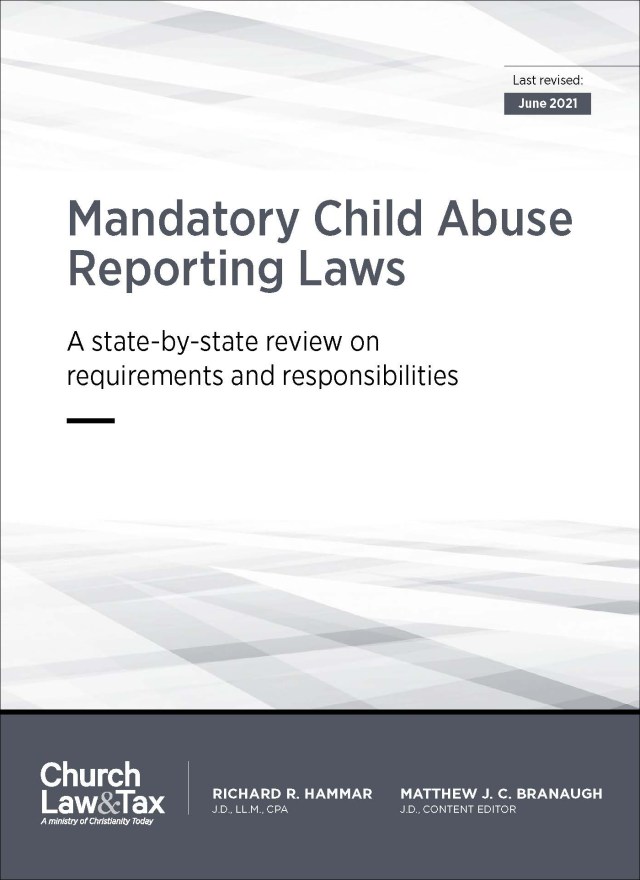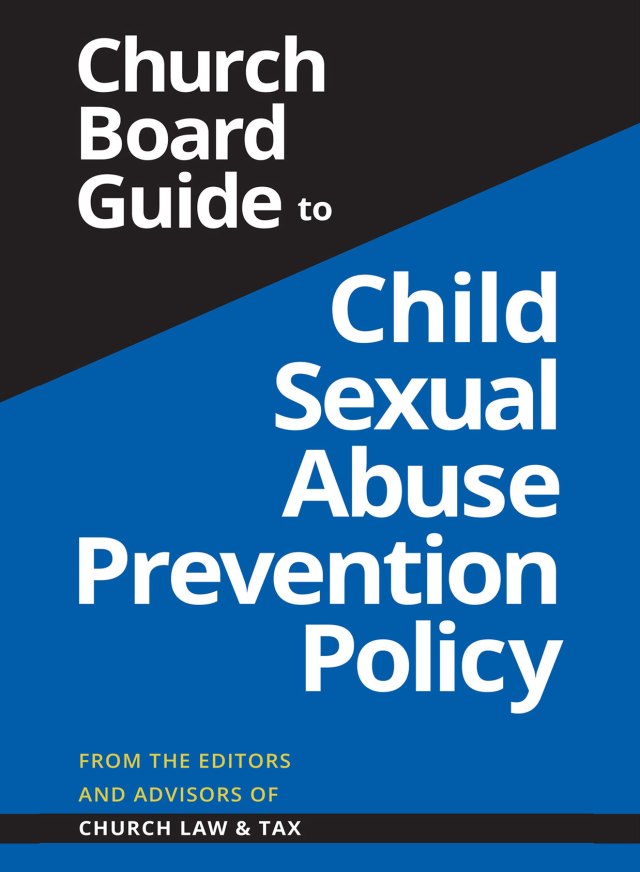Churches need to be aware of how children are being protected at church from sexual, mental, and physical abuse. To help in this effort, we’ve interviewed a group of leading experts on preventing sexual abuse at church. This is the fifth in the series. Don’t miss the previous posts on how to respond to reports of child abuse , preventing child sexual abuse , the state of prevention in the church, and common church board blind spots.
Roundtable participants: Brian McAuliffe, CFO at Willow Creek Community Church in Illinois; Boz Tchividjian, law professor at Liberty University and executive director of GRACE ; Peter Persuitti, managing director of insurance and risk management of Religious & Nonprofit Practice at Arthur J. Gallagher & Co.; and Frank Sommerville , lawyer and a shareholder in the law firm of Weycer, Kaplan, Pulaski & Zuber, P.C . Freelance editor Ashley Emmert conducted this roundtable discussion with assistance from Church Law & Tax assistant editor Samuel Ogles .
Ashley: What kind of insurance coverage do churches need to make sure that they’re covered in the case of sexual abuse?
Peter: Thanks for asking this. The process is complex.
What strikes me the most in my experience is the fact that coverage is often seen as a means to ‘rest’ relative to accountability and ministry protection. In light of this, I might say the best is organizations that are actually self-insured, meaning they have long been putting money away to be prepared for allegations, mindful that they can truly respond with a ministerial arm given they are not ‘controlled’ by the carrier per se.
However, smaller churches [often] rely on coverage as one level of protection, and this is prudent.
So I suggest that churches look at both claims-made and occurrence type coverages first off. These are very different yet need to be understood. And if you go from one to the other, then there are other elements to make sure there are no gaps.
There are definitions of the act, personal injury, that need to be closely examined. If you think of coverages as more of restrictions of coverage, then you have the right mindset to find ways to make sure the definitions relate to your exposures. It used to be silent as a coverage and perhaps that may have been a better arrangement! Coverages actually require definitions and the mere defining actually begins to put ‘fences’ around the coverage. Manuscripting is a form of modifying your definitions for your exposures and we suggest you ask your agent or broker about this opportunity.
Limits are another point of discussion. Some will say that the higher limits you have, the more plaintiffs will pursue higher verdicts. Verdicts relate in some ways to jurisdictions, so be aware of the awards given other victims over the past few years.
Ultimately, I hope your elders and trustees will constantly ask the question, “Are we doing all we can to protect children and the vulnerable?” And please don’t say, “Knock on wood, we have not had any accusations.” You know the statistics, and you have a community that represents numbers. Keep in mind that the statistics will say that you have victims in your midst. Always be ready to minister as you know not when the urge will come to a victim to seek help. I believe our biggest concern is the silent nature of this epidemic, hidden in families, in schools, in churches, in communities. Hiding it actually could lead a victim to become a perpetrator and so the vicious cycle continues.
We are called to be vigilant and stewards of safe environments.
Ashley: For past abuse, what is the statute of limitations for filing a lawsuit? How recent must the abuse have occurred to bring the matter to court?
Brian: Every state is different. There are a handful of states now that have no statute of limitations, and other states that have statute of limitations with conditions. One example of a statute of limitations with a condition is a certain number of years after [the victim’s] eighteenth birthday.
It’s good to hire competent legal counsel to understand and know the law. I don’t think that should drive churches’ policies or how they respond, but it is a valid question, and the answer changes depending on where you live.
Peter: It is a state-by-state issue. For example, Minnesota has just opened up its statute. In fact, the archdiocese in St. Paul-Minneapolis declared bankruptcy earlier this year because of it.
So I can’t say enough about the advocacy concept, and it’s far beyond misconduct violations. It extends to all kinds of other maltreatment of people who are different.
Frank: The statute of limitations varies from state to state. I’ve been involved in cases in multiple states, and even where you have a statute of limitations there are lots of events that can hold the statute so that it doesn’t run on the civil side. I have handled cases where the events occurred 20 or 30 years ago. So I think you want to get the coverage that is going to pick up all of your past, if possible, if it’s available in the marketplace. I also tell clients to buy the highest limit [insurance] that you can afford, because the damages can be substantial and they can drain the church’s resources a lot. Even the defense costs for a sexual misconduct case—I’ve seen them run from $500,000 to $1 million.
Peter: So [a church] would try to get defense costs outside the limits. That’s another technicality.
Frank: That’s right. We want those because they are expensive. They are time consuming. We want to prevent it, but we also want as much coverage as we can afford. And you want to pay attention to the exclusions on the policies. They’re not all the same, no matter what people think. And I think it’s wise to have an experienced broker reviewing the policies on behalf of the church to point out the things that are good and things that are not so good. In fact, I have sent mine, our church’s policies, to a coverage lawyer who does nothing but coverage litigation in order to tell me everything that’s not covered so that we can make a decision when comparing different policies. I think that’s money well spent.
Peter: Ultimately, though, in a court of law, the biggest issue becomes one of negligence and vicarious liability. We just have to start here with due diligence with the church being the shining light, the example of an organization doing everything that they can on this issue. These things are going to happen. It’s the human condition. They will happen in the best of managed organizations because there’s power in all of our organization, there’s mental illness, there’s all kinds of access, there’s social media that’s changing. At the end of the day, what are we doing as a church that is responsible and what are we doing that will stand up against any accusation of negligence?
Ashley: Do you recommend that there is an advocacy program in every church or in every denomination?
Brian: Obviously you’d want it in every church if you could do it, especially for churches that are nondenominational. There should be at least something inside the denomination if you can’t afford to do it at each church. It’s just that connection and reaching out need to be part of the process. We need to be the church despite incidents that happen.
Boz: In some ways I think every member of a faith community should be an advocate. I don’t think we delegate that to other people. Now, that doesn’t mean that there aren’t some within the church who are specifically focusing their energies and getting additional training and education on the related matters. But I think the gospel calls all of us to be advocates, especially for the most vulnerable amongst us, and those are our children. And so that’s part of our shift in culture is to say that and train our members to understand that and determine how that looks for them. How can they, in their specific roles as members of a church, be advocates? Can you be an advocate for the most vulnerable around you? I think that creates safe places.
For training on preventing child abuse, see the Reducing the Risk kit.




